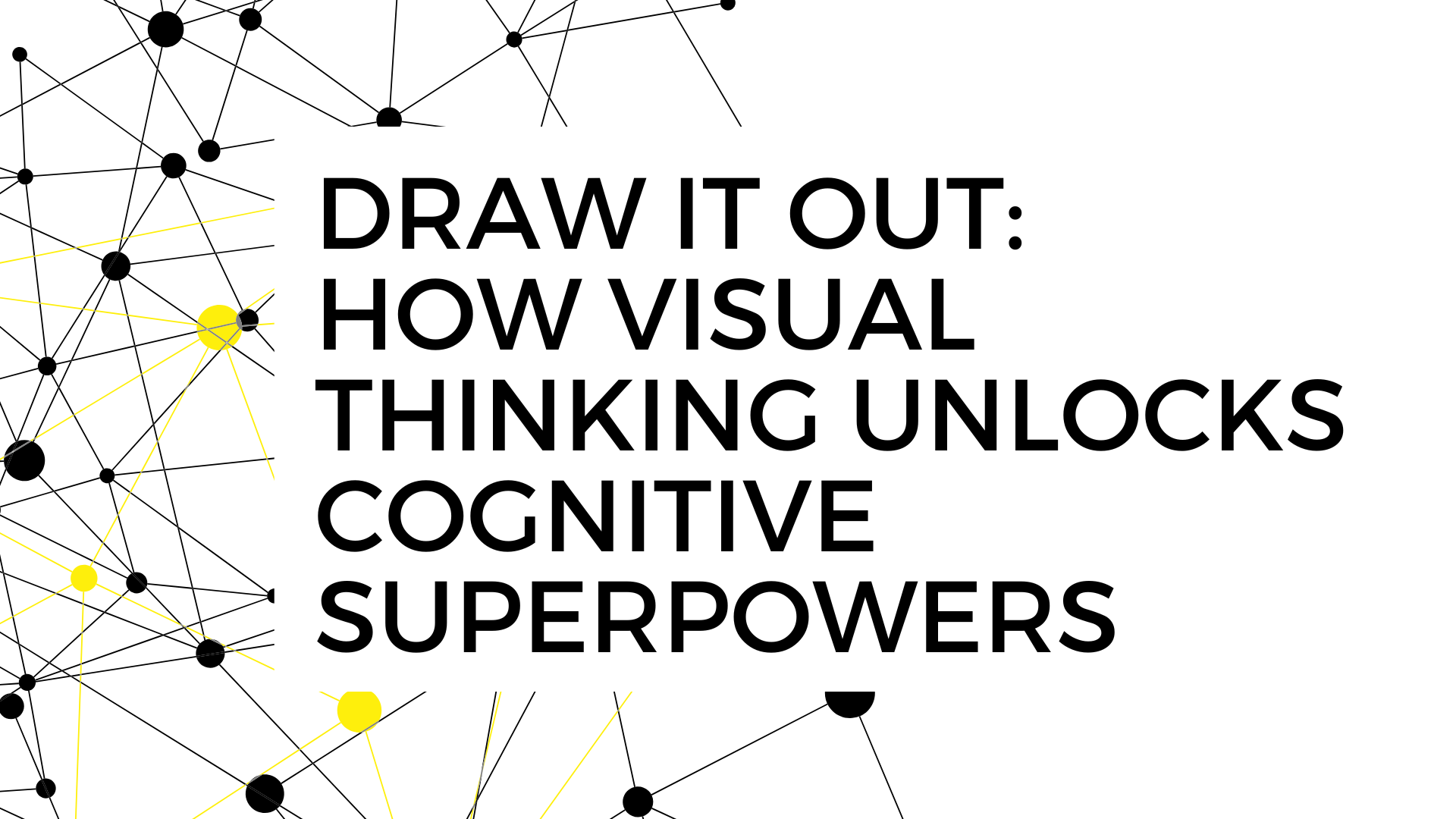Draw It Out: How Visual Thinking Unlocks Cognitive Superpowers

Why Draw? The Cognitive Case
Human cognition is powerful, but not limitless. When faced with large volumes of information, our working memory quickly becomes overwhelmed. In our previous blog post “5 Steps To Ruthless Data Distillation” we referred to George Miller’s classic 1956 paper “The Magical Number Seven, Plus or Minus Two: Some Limits on Our Capacity for Processing Information” and the importance of recoding information into higher-level representations that are easier for the brain to handle.
Diagrams are recoding in action. They compress disparate facts into coherent visual structures, extending our cognitive reach. The act of sketching enables us to think and by drawing connections we externalise our understanding making patterns visible that weren’t clear before.
Four Diagram Types That Turn Data Into Stories
Different challenges demand different lenses. Here are four powerful diagramming approaches to transform raw information into insight:
1. Use mind maps to organising ideas around a core question
Mind maps start with a central question, then radiate into branches for related themes and subtopics. They mirror the way our brains naturally group ideas, so instead of juggling a dozen disconnected measures, you see themes, priorities, and trade-offs at a glance. Tools like MindMeister or Miro make digital mapping easy, or you can stick to pen and paper.
In practice: Imagine reviewing campaign effectiveness. Place “How effective was the 2025 campaign?” in the centre. Create branches for Audience, Channels, Content, Budget, and Metrics. Add sub-branches for specifics (e.g., audience behaviours, ROI tracking). Use colour or icons to highlight where performance exceeds or lags benchmarks.
2. Use tree maps to reveal scale and proportion
Tree maps show hierarchical data as nested rectangles. Size reflects scale (e.g. Sales contribution), while colour can signal performance (e.g. growth vs. decline).
In practice: One client had multiple slides showing SKU-level opportunities across retailers. Viewed separately, the data pulled attention toward small tactical optimisations. But when redrawn as a tree map, the bigger picture emerged: nearly all growth potential depended on one retailer. Suddenly the strategic risk – the dependency on a single partner - was impossible to miss.
3. Use flowcharts and Sankey diagrams to map journeys and bottlenecks
Flowcharts chart processes step by step, showing decision points and dependencies. Sankey diagrams extend this by illustrating the magnitude of flows.
In practice: Investigating a drop in call-centre satisfaction, a flow analysis revealed the root cause wasn’t wait times or agent quality. Instead, broken digital channels (chatbot failures and missing online billing features) forced customers who preferred digital self-service into phone queues. By mapping customer journeys visually, the true driver of dissatisfaction became undeniable.
4. Causal Loop Diagrams – Seeing the Feedback Loops
Some challenges aren’t linear—they’re circular, with variables feeding back into one another. Causal loop diagrams make these dynamics visible.
They have three simple parts:
Variables (things that change, like sales or satisfaction)
Arrows (how one affects another)
Loops (feedback circles, either reinforcing or balancing)
Example: In marketing, more advertising leads to more sales, which results in a greater demand on service. As service capacity strains, satisfaction falls and repeat sales slow. That’s a balancing loop, where growth creates pressure that dampens itself. Seeing this loop helps draw out insights that can avoid short-term wins that undercut long-term health.
From Better Slides to Better Habits
Diagrams don’t just make information pretty; they surface meaning. They move teams from describing data to interpreting it. That’s the difference between tactical observations and strategic insight.
The most impactful data stories don’t just land in a deck. They reshape the way teams think, converse, and decide. That’s why our work with clients isn’t just about better charts, it’s about embedding better ways of working.
If you’re ready to shift from presenting numbers to telling stories that drive action, we’d love to help. Connect with us to start building your team’s visual thinking muscle.